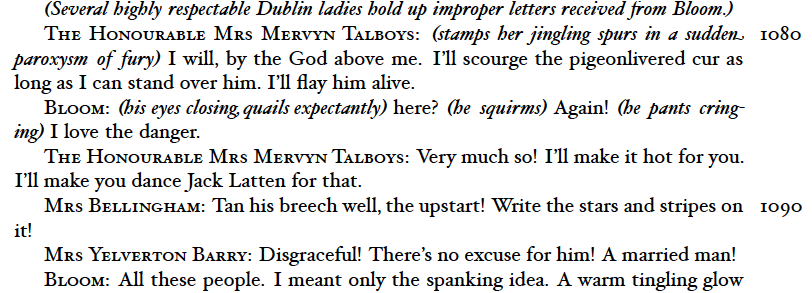Dramaturgy: LaTeX

I have a long-standing fascination with typography. In the late ‘80s and early ‘90s, I became quite adept with TeX and LaTeX, the well-known scientific typesetting system. When I was at ICPC, I think I read the TeXbook cover to cover—twice. I became the TeX administrator for the CS department while I was at Brown.
And then I moved to Seattle to work for Microsoft and entered the world of Windows, and I left TeX behind for more than 15 years.
I wrote the other day that I prepared the Bloomsday scripts in XML for several years, using XSLT to generate HTML. I used to send the HTML to the readers, but everyone’s browser paginated differently when printing, which led to confusion at rehearsals. So I started giving them PDFs: problem solved except for the person who needed a large-print version.
Last year, I prepared the script with reStructuredText. Normally, I use reST to generate HTML, but reST can also generate LaTeX. I decided to use rst2latex to take advantage of LaTeX’s superior typesetting.
I wasn’t happy with the results. The script looked like a crappy technical paper from the ‘90s, thanks to the tired Computer Modern layout. CM works well for math, less well for text, in my opinion.
The MacTeX extras included XeTeX, a modern variant of TeX that supports Unicode and OpenType fonts. I experimented with using Hoefler to set the script. You can see the results above: it looks gorgeous.
More to come.